Choosing the right paint color is one of the most important decisions when decorating a home. The shade of the walls sets the tone for the entire space, impacting mood, aesthetic appeal, and functionality. When opting for a neutral backdrop, Classic Gray and Alabaster are two of the most popular choices.

Classic Gray and Alabaster are muted, versatile neutrals that work well in various settings. However, some key differences between these two popular paint colors are worth examining when deciding between them. This article will compare and contrast Sherwin-Williams’ Classic Gray and Benjamin Moore’s Alabaster – from historical origins, color characteristics, aesthetic qualities, real-world applications, and more.
A Brief History of Classic Gray and Alabaster
Before diving into the specific attributes of these two paint colors, it is helpful to understand their origins and evolution within the paint industry.
The Origins and Story Behind Classic Gray
Classic Gray entered the scene in 2016 as part of Sherwin-Williams’ annual Colormix Forecast. This forecast predicted the most popular paint shades for the coming year based on color trends. As a light-to-medium muted gray with violet-blue undertones, Classic Gray quickly became a paint favorite for its versatility and sophistication.
By 2017, Sherwin-Williams had added Classic Gray to its signature Color Preview Palette as one of its “cornerstone neutrals” for home interiors. Since then, Classic Gray has only continued to grow in popularity. Homeowners, interior designers, and paint professionals gravitate towards Classic Gray for its livable, organic feel that works in modern and traditional spaces.
Alabaster: A Long-Standing Decor Favorite
Unlike trendy Classic Gray, Alabaster by Benjamin Moore has been a beloved neutral paint color for decades. This ultra-light, barely-there gray has been described as the perfect “blank canvas” for layering other accents and décor.
Alabaster first debuted on the market in the 1990s. And despite color trends shifting over the years, Alabaster has remained a top choice for interior walls. Its soft, welcoming vibe suits varied design aesthetics from farmhouse to contemporary. Both professional painters and DIYers consistently rank Alabaster as one of the most popular paint colors.
So while Classic Gray is the “new kid on the block,” Alabaster has long-standing popularity – and for good reason. Both paint giants Sherwin-Williams and Benjamin Moore classic gray have added these two muted grays to their neutral palette staples for their versatility, aesthetic appeal, and timeless sophistication.
Comparing the Undertones and Color Profiles
Now that we have covered some background on Classic Gray and Alabaster, let’s compare their distinct undertones and color characteristics. Subtle differences in pigment and undertone create unique aesthetics between paint colors.
Classic Gray’s Blue-Violet Influence

One of the key things that sets Classic Gray apart is its distinctive blue-violet undertone. This subtlecool undertone adds depth and interest to what could otherwise be a flat, lifeless gray. The violet tinge warms up Classic Gray slightly while still keeping it neutral.
In certain lighting, Classic Gray can take on a soft lavender-like hue. Other times, the gray transforms into a soothing blue-green. This chameleon-like ability makes Classic Gray versatile across different room types, lighting, and color pairings. The distinctive undertone gives a sense of complexity and sophistication.
Alabaster: Crisp, Pure, and Clean
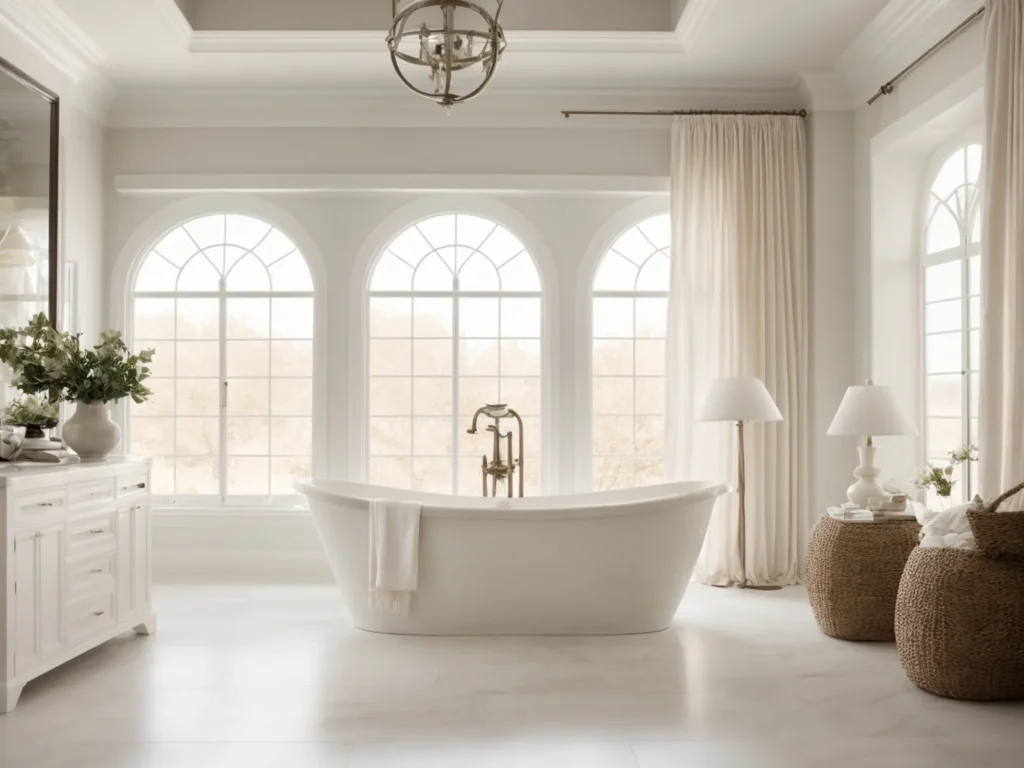
Unlike Classic Gray, Alabaster by Benjamin Moore has no detectable undertones. This “pure” neutral shade lives up to its name – Alabaster is a crisp, clean white-gray with a brightening effect.
Without other pigments altering the shade, Alabaster reflects light cleanly and evenly. Its soft, hazy appearance almost seems to glow in spaces with ample natural light. Alabaster provides a bright, welcoming backdrop without the starkness of a true white.
So while Classic Gray has those blue-gray undertones, Alabaster remains crisp and pure. This makes Alabaster ideal for those seeking a “blank slate” neutral without any color bias.
Comparing Light Reflectance Values (LRV)
Another important technical difference between these two paint colors lies in their LRVs. LRV stands for “Light Reflectance Value” and indicates how much light a color reflects. The higher the LRV, the more light it bounces back.
Understanding LRV for Paint Selection
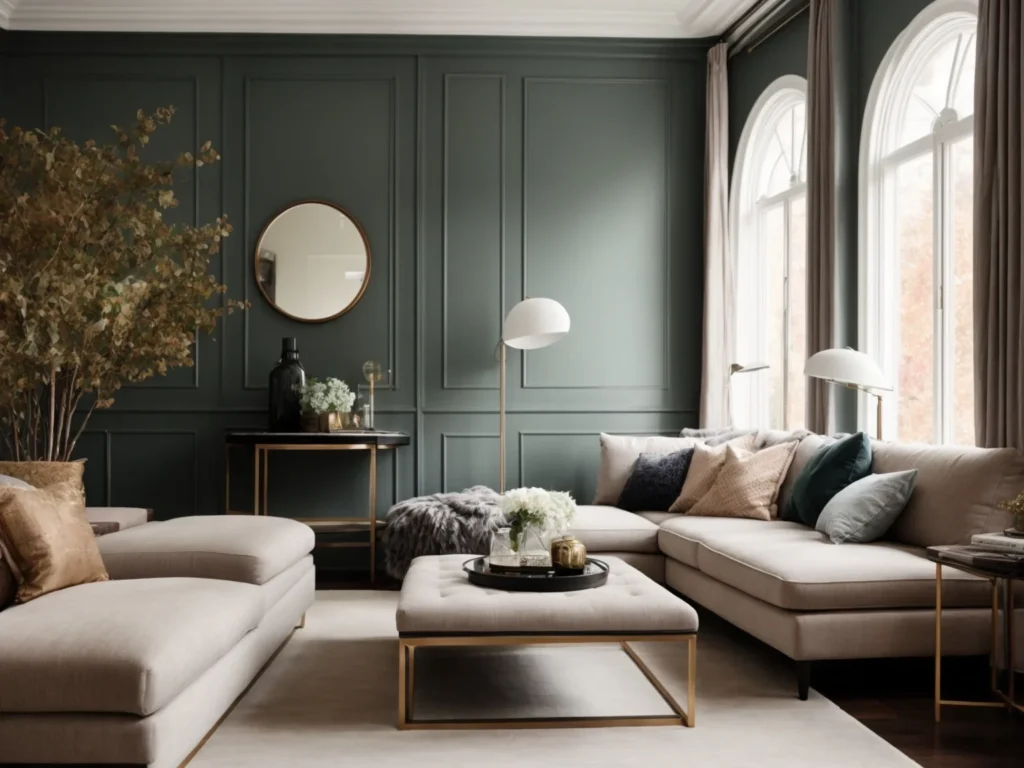
A paint color’s LRV is crucial because it impacts a room’s perceived brightness and size. Higher LRVs make spaces feel airier and more open. Lower LRV colors absorb light rather than reflect it, potentially making rooms feel smaller and darker if not balanced properly. For this reason, you’ll generally see higher LRV paints used in north-facing or otherwise darker rooms.
When selecting a shade for your space, pay attention to the LRV. An interior designer may take light readings of a room and intentionally choose paints with higher or lower LRVs to create the desired ambiance.
Alabaster Reflects the Most Light (LRV 85)

Alabaster has one of the highest LRVs of any major paint color – coming in at a very light-reflective 85. Nearly 90% of the light hitting Alabaster bounces back, giving it a brightening effect. Rooms feel ethereal and spacious with Alabaster walls. This high LRV makes the paint color well-suited to darker, north-facing spaces.
Classic Gray Has an LRV of 75
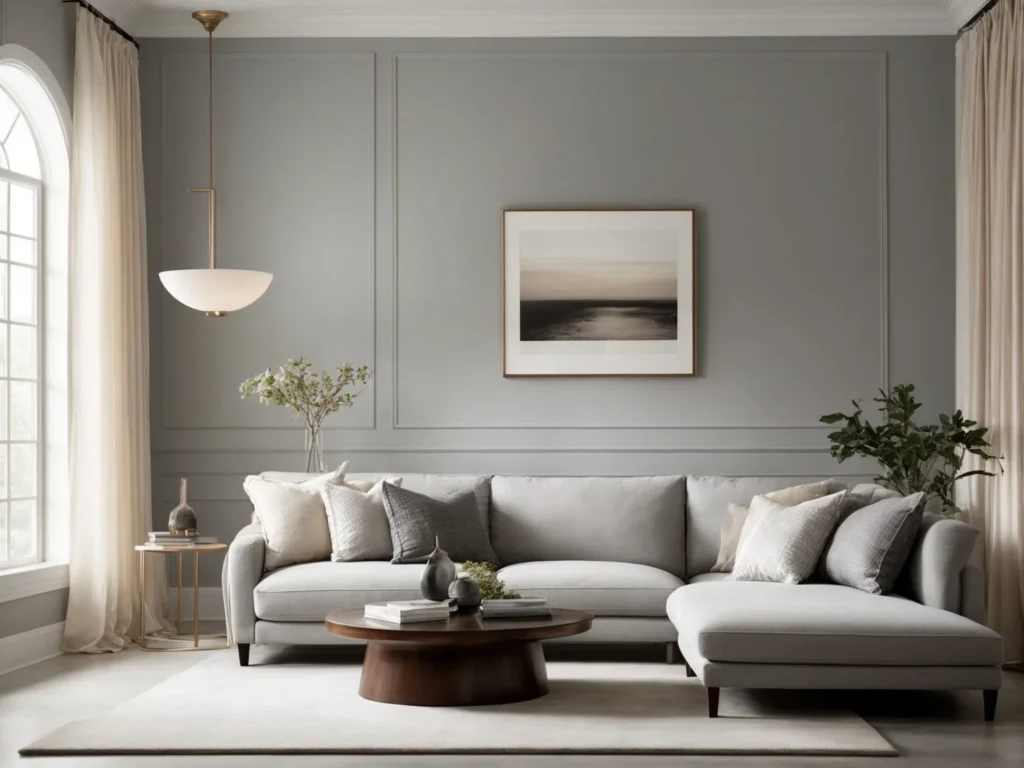
While still light-reflective, Classic Gray’s LRV of 75 is noticeably lower than Alabaster’s 85 rating. Approximately 75% of light reflects off Classic Gray walls, absorbing more light than Alabaster would. This contributes to Classic Gray’s cozier, more intimate feel. The lower LRV also means you must take care when using Classic Gray in already dark rooms – balancing it with plenty of light.
So if maximizing brightness is your priority, Alabaster has the edge. But Classic Gray’s lower LRV gives it a warm, enveloping effect that some find more inviting than stark white walls.
Aesthetic Appeal and Design Versatility
Beyond the technical differences in undertone and light reflectance, Classic Gray and Alabaster each impart a distinct aesthetic. Let’s explore their visual impact and versatility.
The Depth and Character of Classic Gray
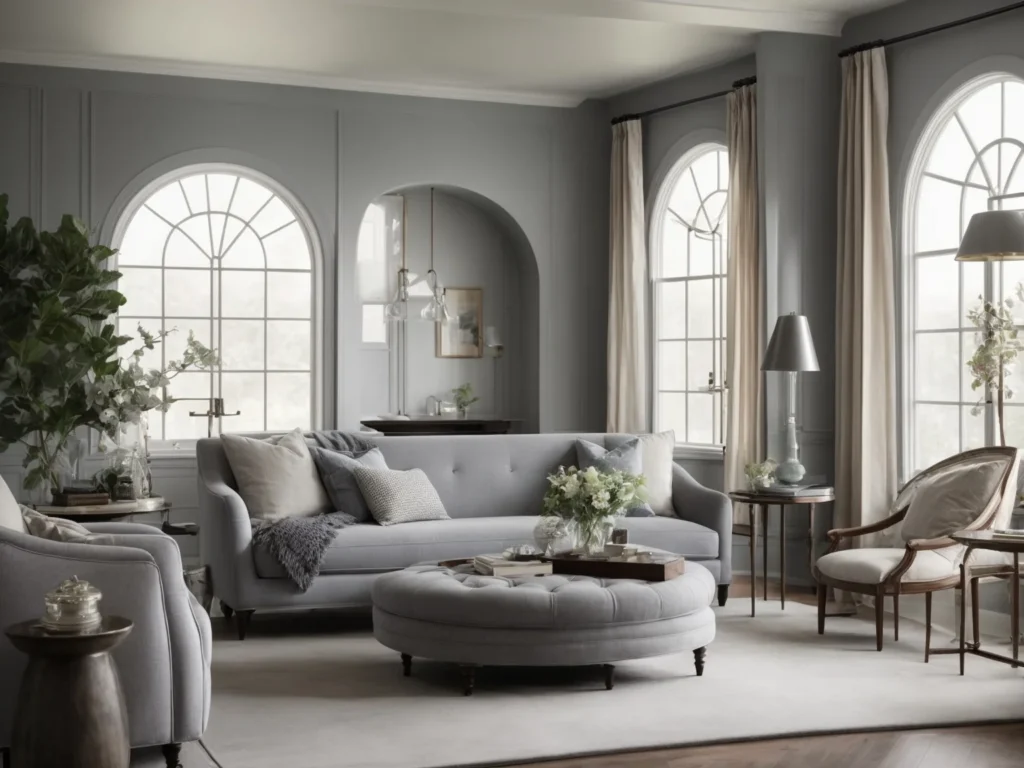
Classic Gray offers more “depth” than many neutral paints thanks to its dynamic undertone. The subtle blue-violet tinge interacts with light to add dimension and visual interest to a space. There is more movement and color complexity.
Classic Gray feels organic, layered, and quietly sophisticated. Unlike a flat gray, it has character. This adaptability makes Classic Gray at home in varied settings from urban lofts to family cottages. Classic Gray provides a warm, enveloping backdrop that invites you in.
Alabaster’s Crisp, Light, and Timeless Beauty
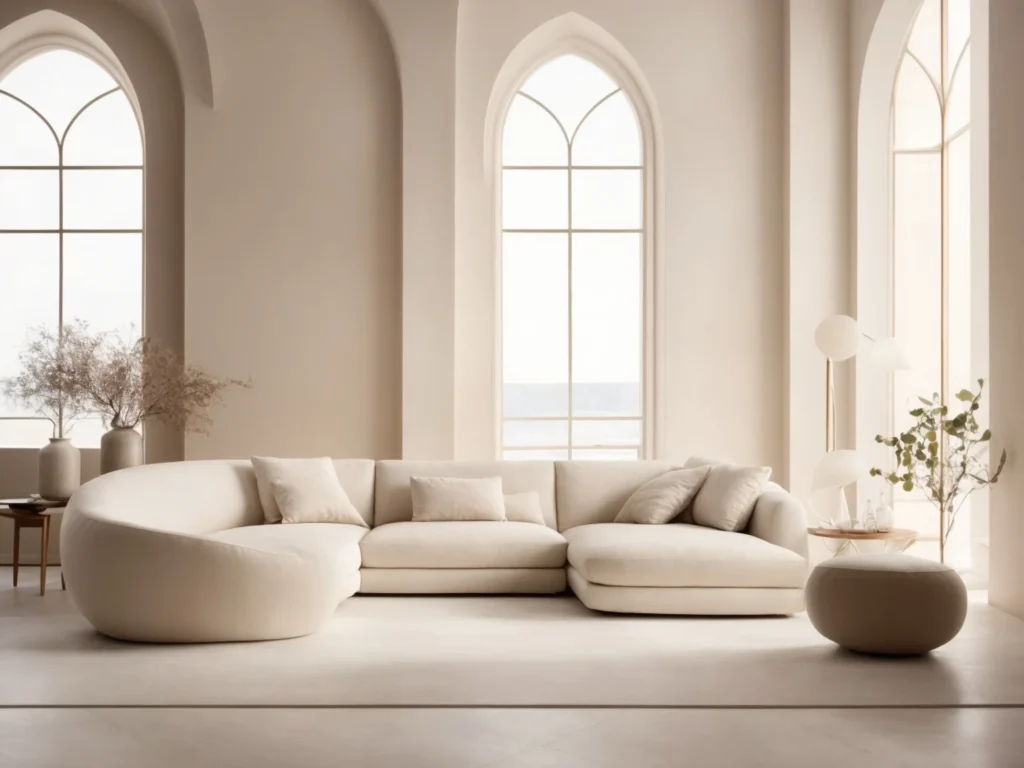
Alabaster possesses an entirely different beauty centered on its simplicity. Without added tints, Alabaster feels almost translucent and ethereal. It is an elegantly spare, barely-there neutral that feels light as air.
The absence of undertones gives Alabaster a clean and open look. Without competing pigments, Alabaster highlights rather than competes with other furnishings and accent colors. It provides a soft backdrop and lets other elements shine.
Adapting to Any Design Aesthetic and Room Type
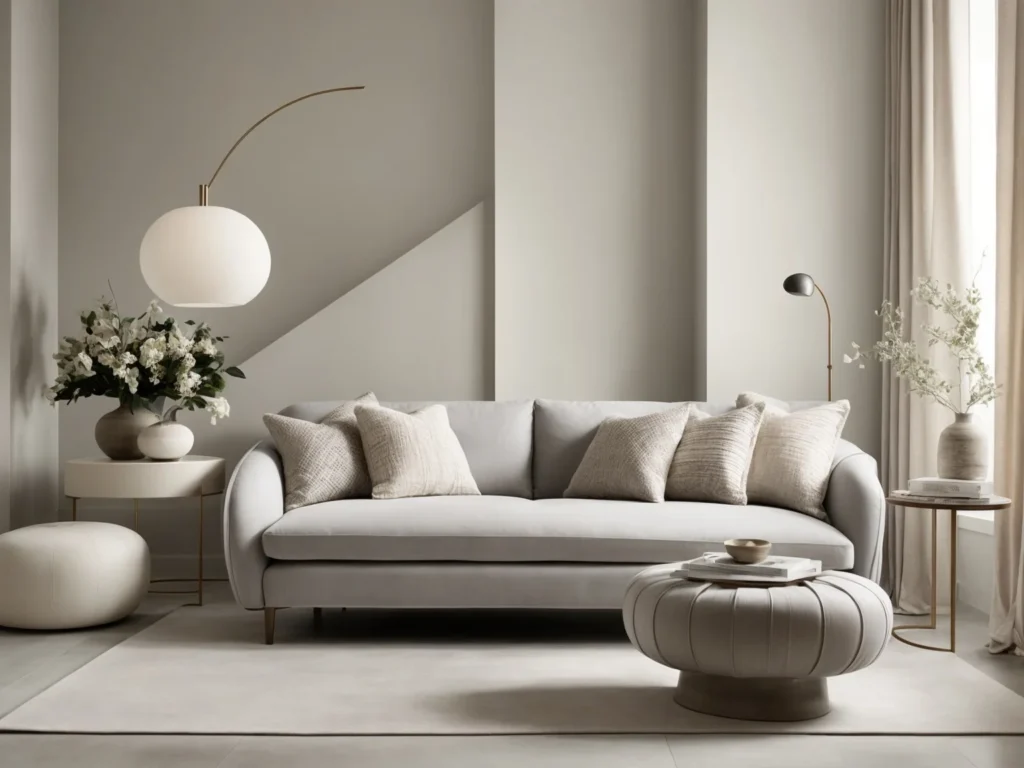
Classic Gray and Alabaster are considered versatile neutrals suitable for entire homes. Their muted tones complement most color schemes from bold to subdued. Each can adapt from traditional to modern spaces based on other décor choices.
Alabaster’s crispness is especially important to contemporary, minimalist designs. The clean white backdrop enhances sleek lines and forms. Classic Gray may better suit those desiring subtle color complexity in a more eclectic or traditional home.
But these are generalizations, not hard rules. Creative designers use Classic Gray and Alabaster in unexpected ways to stunning effect. Both can make bold or subdued statements depending on accompanying furniture, textiles, and accents.
Complementary Color Schemes and Pairings
Let’s explore how Classic Gray and Alabaster interact with accompanying colors through complementary schemes and pairings.
Classic Gray’s Pairings
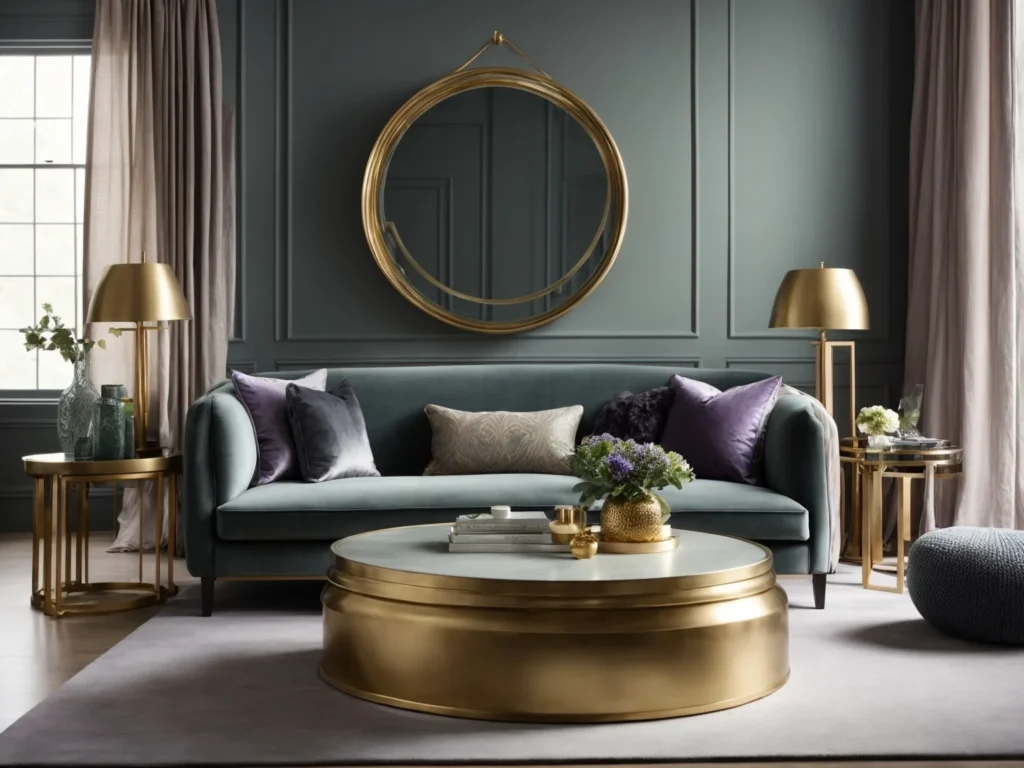
Classic Gray is an extremely adaptable backdrop. Its violet-gray undertone pairs beautifully with other colors from the blue and green families. Try matching Classic Gray walls with navy blues, sage greens, and slate-gray accents.
Warmer metals like bronze, copper, and brushed gold also pick up on the subtle warmth of Classic Gray. Wood furnishings and finishes in similar cool, organic tones complement Classic Gray’s aesthetic.
Overall, the best pairings enhance rather than compete with Classic Gray’s blue-violet influence. Deep, saturated accent colors let the soft neutral backdrop shine. Lighter purple, blue, and green tints reflect Classic Gray’s subtle undertones.
Alabaster’s Pairings
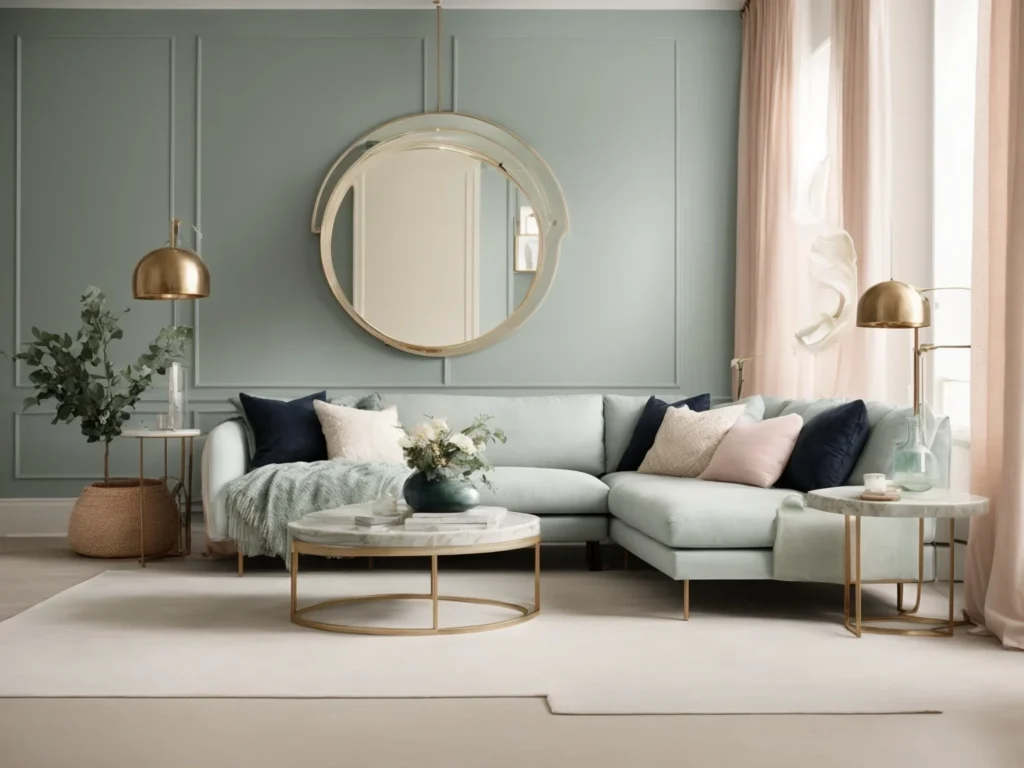
Crisp Alabaster also pairs effectively with a wide spectrum of colors since it is a true blank canvas. Unlike Classic Gray, Alabaster has no undertones that color schemes must complement. Feel free to get creative!
That said, Alabaster’s pristine whiteness does pair particularly well with darker, richer colors. Deep greens, navy blues, charcoal grays, and black accents pop against the soft white backdrop. Metallics and wood tones also create visual interest and contrast.
Different shades of creamy whites and beiges blend seamlessly with Alabaster walls for a monochromatic look. Soft pinks, sage greens, and pale blues echo Alabaster’s clean aesthetic. You can choose colors based on your own creative vision rather than coordinating with the paint color’s undertones.
Using Classic Gray and Alabaster Together

Some designers even use Classic Gray and Alabaster in tandem to balance their opposing aesthetics. For example, you may opt for Alabaster walls in an open living space and define cozier spaces like bedrooms with Classic Gray.
Or alternate walls painted in Classic Gray and Alabaster to add light, dimension, and visual architecture through color blocking. Classic Gray trim contrasts beautifully with Alabaster walls (and vice versa). Pay attention to how each hue impacts the space differently.
Balancing these two versatile neutrals creates natural separation between zones while maintaining a unified, sophisticated color scheme. The depth of Classic Gray and clean elegance of Alabaster complement each other.
Comparing Interior vs. Exterior Applications
How do Classic Gray and Alabaster translate to exterior paint projects? Here’s an overview of how these neutral shades perform on home exteriors.
Classic Gray for the Exterior

Classic Gray works beautifully on a home’s exterior thanks to its dynamic gray-violet undertone. It pairs well with landscaping and adds subtle visual interest to wood, brick, and stone facades.
Classic Gray skews darker and cooler than many beiges and tans. This helps it maintain a graceful presence as the exterior ages and weathers over time. The gray pigment also minimizes visible dirt and fading. Overall, Classic Gray embodies understated sophistication on home exteriors.
Alabaster Shines on Exteriors Too

For those preferring a true white exterior, Alabaster is hard to beat. This high-LRV shade bounces light beautifully while remaining soft and hazy. Alabaster’s brightness and illumination are ideal for colonial, beach, and cottage-style homes.
Compared to harsh, clinical whites, Alabaster has a warmth and softness that flatters varied exteriors from clapboard to brick. It maintains a welcoming presence from dawn to dusk. Just spot-clean Alabaster regularly, as dirt build-up is quite visible. For a pristine white exterior with elegance, Alabaster is the top choice.
Both Classic Gray and Alabaster enhance curb appeal and suit varied architectural styles. Consider the existing exterior finish and your overall vision to choose the right match.
Evaluating Longevity and Timelessness
No one wants to choose a paint color that will feel quickly dated. Let’s evaluate how “timeless” Classic Gray and Alabaster are predicted to remain based on history and color trends.
The Enduring Appeal of Classic Gray
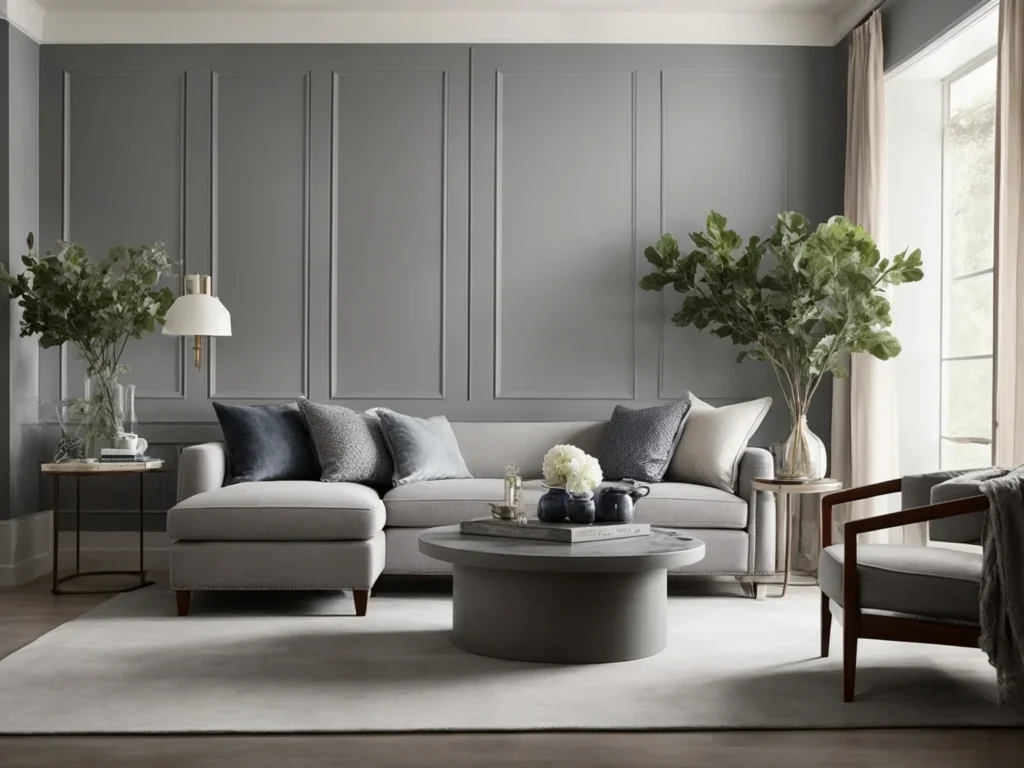
As a newer arrival on the paint scene, the longevity of Classic Gray’s popularity remains to be seen. That said, neutral grays have become perennial bestsellers, indicating that Classic Gray will likely stay here.
Its versatility and sophistication reflect current design tastes but aren’t tied to any one era or style. The muted gray with blue undertones echoes organic color palettes that designers and consumers gravitate towards. While no paint color is “truly” timeless, Classic Gray has the depth and adaptability to remain current and fresh for years.
Alabaster: A Long-Standing Classic
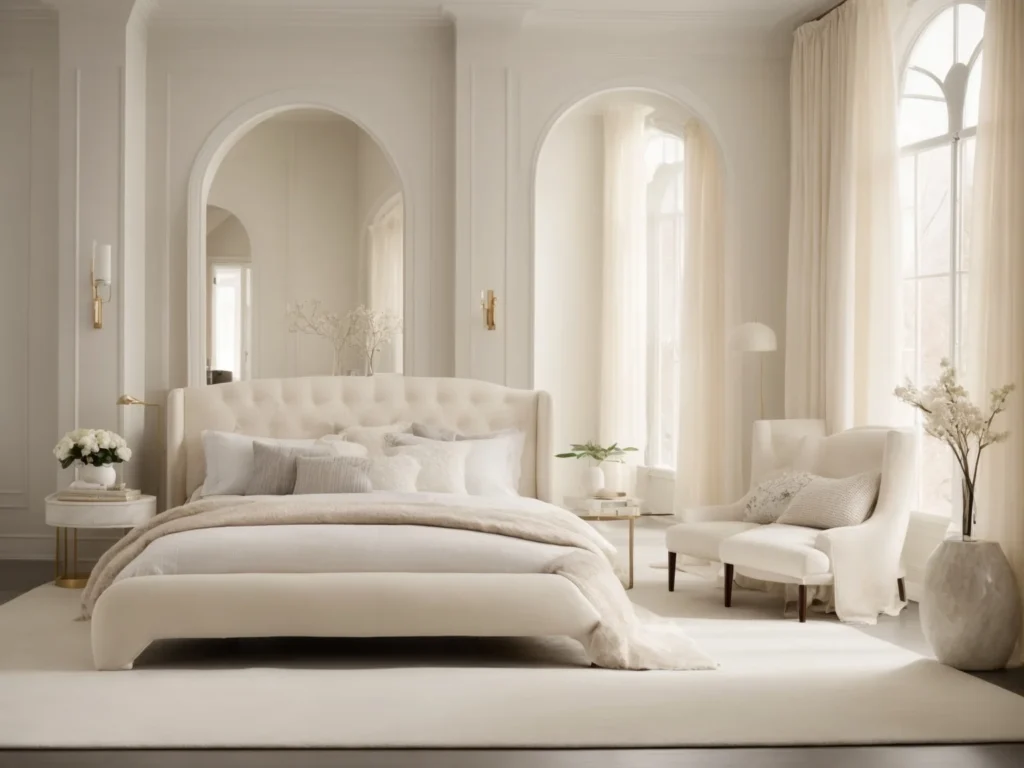
For a truly enduring paint color, it is hard to beat Alabaster’s generations-long appeal. This ultra-soft, luminous gray has been favored since the 1990s and shows no sign of going out of style.
As a true neutral backdrop, Alabaster adapts flawlessly to evolving color trends. It provides a light, airy respite from whatever bold accents may come in and out of fashion. In a world where tastes constantly change, Alabaster remains a reliable standby. This understated, barely-painted look has staying power.
Practical Factors: Maintenance, Cost, and Availability
Beyond aesthetic appeal, practical considerations like upkeep, cost, and availability also impact paint decisions. Let’s compare Classic Gray and Alabaster.
Maintaining Walls Painted Classic Gray
One perk of deeper shades like Classic Gray is that they hide scuffs, smudges, and imperfections well. The color’s inherent depth helps disguise marks that stand out against Alabaster’s pale backdrop.
That said, Classic Gray does require more frequent touch-ups to maintain its sophisticated look compared to lighter shades. Expect to spot clean every 1-2 years. Use a microfiber cloth and mild soap and water to gently clean without abrading the paint.
While Classic Gray does not highlight every fingerprint or brush against the wall, regular maintenance preserves its refined violet-gray aesthetic.
Keeping Alabaster Walls Looking Crisp
Alabaster’s ultra-light luminosity comes at the cost of requiring vigilant upkeep. Dirt, grease, fingerprints, and other imperfections stand out prominently on such a pale backdrop.
Frequent dusting and gentle cleaning every 3-6 months keeps Alabaster walls looking their best. Use a mild cleaner and microfiber cloth to spot treat marks. While meticulous, this care regimen preserves the pristine, ethereal effect that makes Alabaster so desirable. Just account for the necessary dedication.
Availability and Cost Considerations
Both Classic Gray and Alabaster are accessible, popular paint color options. Classic Gray is sold exclusively through Sherwin-Williams, while Benjamin Moore retailers carry Alabaster. Most paint suppliers can also color match one of these shades.
Pricing fluctuates based on finish, sheen, quality, and current sales. Typically, expect to pay $25-$45 per gallon. Primer, labor, and application tools will incur additional costs, especially if hiring professional painters. While pricing varies, Classic Gray and Alabaster provide value based on quality and longevity.
User Impressions and Professional Opinions
Beyond the technical comparisons, what are real homeowners and designers saying about using Classic Gray and Alabaster? Here are some insights.
Homeowner Experiences with Classic Gray

Reviews of Sherwin-Williams’ Classic Gray are overwhelmingly positive. Homeowners praise the sophisticated mood it sets through its warm, inviting tone and dynamic gray-violet appearance. The depth of color provides a cozy, enveloping feel many find soothing.
Others appreciate Classic Gray’s chameleon-like ability to transform from a cool gray-blue to a warm taupe depending on lighting. The unpredictability adds life and visual interest. Negative feedback focuses mainly on Classic Gray reading overly dark or formal in some settings based on its lower LRV. Proper lighting and sheen selection help compensate.
Homeowner Feedback on Alabaster

Homeowners and interior designers consistently rate Alabaster as a beloved, reliable neutral. Positive reviews praise Alabaster’s soft, welcoming glow and the sleek, pristine backdrop it creates. People describe Alabaster as soothing, fresh, and timeless.
Critical feedback focuses on Alabaster reading “too white” or stark in some contexts, especially smaller spaces. The high-maintenance required to keep Alabaster looking bright and clean also elicits some negative comments. Overall though, this long-standing paint classic receives outstanding reviews for its light, airy elegance.
Expert Opinions on Using These Neutrals
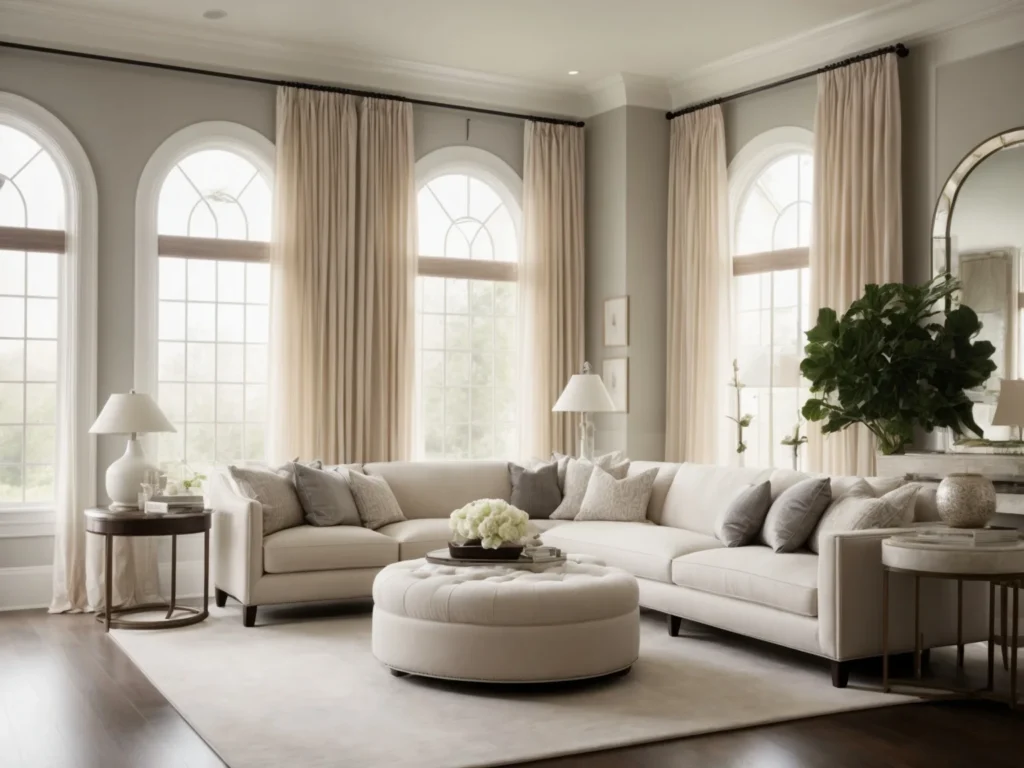
Professional interior designers enjoy working with Classic Gray and Alabaster for their sophistication and versatility. However, they offer specific guidance on using these shades successfully.
With Classic Gray, designers recommend leveraging the dynamic undertones and pairing it with metals, wood tones, and accent colors that reflect its complexity. They praise Classic Gray’s adaptability but caution against using it in dark, north-facing rooms.
For Alabaster, experts emphasize the importance of plenty of natural light and regular cleaning to maintain the crisp effect. Warmer trims and accent walls helps prevent Alabaster from reading too stark or clinical. Professional opinions affirm that both paint colors live up to their reputation when used purposefully.
Conclusion
what are the key takeaways when deciding between timeless Classic Gray and Alabaster?
- Classic Gray offers more depth and color complexity thanks to blue-violet undertones, while Alabaster reads clean, bright, and crisp.
- Alabaster has a significantly higher LRV than Classic Gray, making it the choice to maximize light and brightness.
- Classic Gray provides a cozier, warmer backdrop, while Alabaster’s ethereal translucence lends a more elegant, neutral effect.
- Both paint colors boast outstanding versatility
